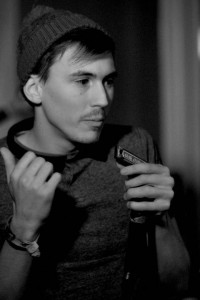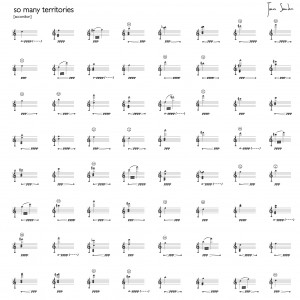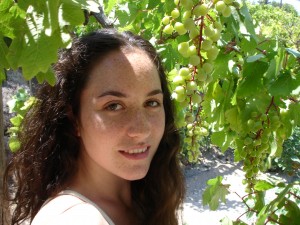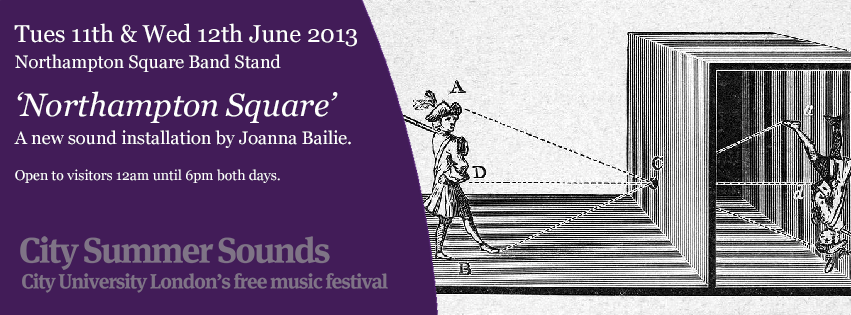
Pianist Gwenaëlle Rouger will be joining Mark Knoop on stage as part of City Summer Sounds. We spent a few minutes having a chat with her.
We’re delighted to welcome you to our stage as part of the festival. Could you tell us a little about the works you will be performing?
I will be playing a piece for piano and electronics called ‘Dans le mur‘ (In the wall), by composer Georges Aperghis. Aperghis was inspired to write this piece by the graffiti that you see regularly out of the windows of commuter trains. He said he imagined that ‘the walls were a type of music, a sort of compressed music, compact, walls of music’. I like the violence and rebellion associated with this piece – it’s my kind of hip hop. The second piece is written for two pianos, live electronics and live video – I will be interpreting this with pianist Mark Knoop. It was composed by Michael Beil, and it is called ‘Doppel‘. I’m interested in its experimental format as a live visual and musical performance. I am also fascinated by the opportunity it gives to the audience to dissect and question the creative process by witnessing the composition and decomposition of the piece in real time.
You say that you perceive the concert as a moment of experimentation for both audience and performer. Why do you think it’s important to have this exploratory state of mind?
This commitment to exploration and experience is the only way to take part in the evolution of the concert format, and the place of the pianist within it, from accepted 19th and 20th norms to what it will become in the 21st century. It is necessary for us to question existing models. By thinking of a concert as a shared experience for both audience and performer alike, we create a unique social moment and facilitate more engagement from the audience. When both listener and interpreter are sharing in this moment of experience, we create a positive creative feedback loop, which keeps the music alive. As John Cage says in his book “Silence“: “The activity of movement, sound, and light, we believe, is expressive, but what is expresses is determined by each one of you…”
In 2013 you began a project called ‘Urgent Stimulation’, in which you are enclosed in a box whilst performing, purposefully blocking the audience from seeing any visual element of your playing. Can you tell us a bit more about this project?
My project “Urgent stimulation” is a concert for solo piano in which I play inside a box made out of a light wooden frame covered in black cloth. This structure covers where the pianist sits, and the area around the keyboard, while the tail and soundboard of the piano are left completely open. This idea comes from the feeling I’ve always had that when I am unable to see the performer I feel more directly in contact with the sound. This piece is called “Stimulation”, because the purpose of art is to stimulate the sensitivity, and creativity which is in every person; and “Urgent” because for this stimulation to occur, one must be an active listener, willing to engage. The void that is created by the absence of the performer creates a feeling of something missing that needs to be filled. The listeners are left in front of themselves, and their relationship with the sound.
You also are one of the artistic directors, and a pianist of the new music ensemble soundinitiative. Can you tell us a bit more about soundinitiative? What works have you been working on recently and what is important for you in this ensemble?
soundinitiative is an ensemble of 12 musicians created in Paris in 2011. We like to think of ourselves as more of a band, in which strong links are formed between the musicians because we play together on a permanent basis. We also like to work with composers on a longer term, in order to create this same bond – this is the case with the likes of Chris Swithinbank, Santiago Dìez Fisher or Joanna Bailie. Through our series ‘Hors les murs’ (Out of the walls), we work outside conventional concert venues; our next date in this series will be in an art gallery in Paris, for example, on 18th June. We will be playing, among other pieces, a cycle by Peter Ablinger. This summer, we are also performing pieces by Joanna Bailie, Santiago Dìez Fisher, Mauro Lanza et Jennifer Walshe at the Darmstadt festival. At Darmstadt, true to our commitment to the notion of audience as experience, we will be the associate ensemble in Simon Steen Andersen’s workshop “Extended Music”.
soundinitiative have a focus on collaborations with established and emerging composers, could you tell us how does this collaborative process inform your playing both of the new works and also more generally?
As performers, we give a body, a breath to the music that only existed in thought when composed. The collaboration with the composer is extremely subtle and enthralling. Both parties must welcome in the other in what makes the core of their personality. This cooperation, and the feeling of shared accomplishment, is an enormous source of energy.
Mark Knoop and Gwenaëlle Rouger perform as part of City Summer Sounds festival on Thursday 12th, 7pm in the Performance Space, College Building.
Admission is free
http://www.city.ac.uk/events/2014/jun/mark-knoop-gwenaelle-rouger-pianos
For more about City Summer Sounds head to: www.city.ac.uk/city-summer-sounds
Follow us on facebook and twitter:
http://facebook.com/CityUniConcerts










